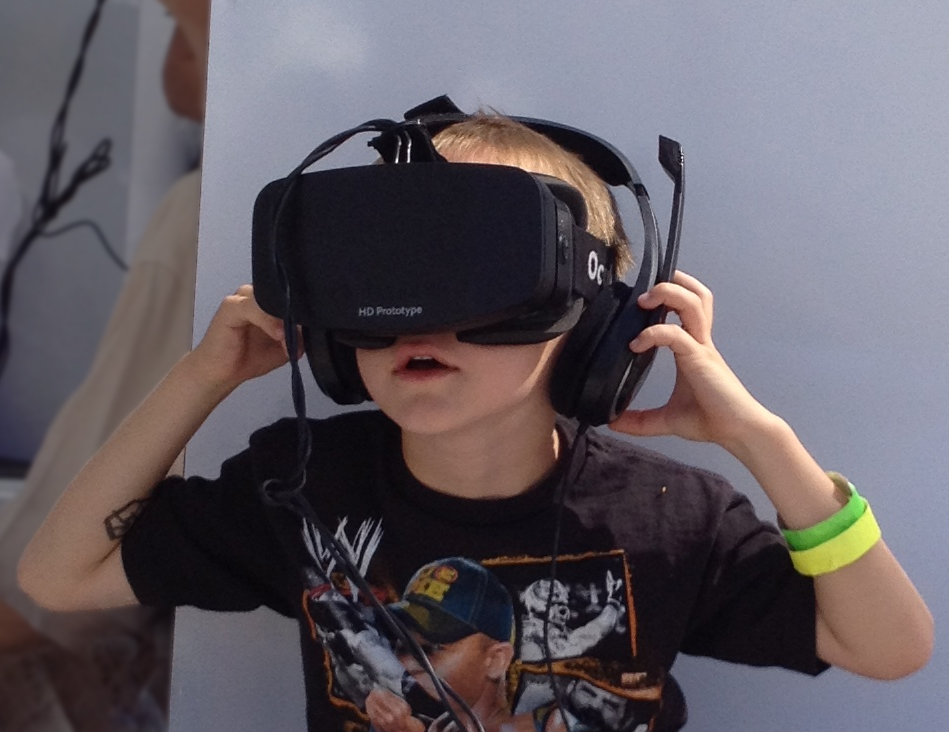VR in Education: Potential and Barriers for Effective Use
Children’s use of virtual reality (VR) seemed to increase during lockdown but was most effective when incorporated with supporting materials that contextualized the VR experience.

A research team at Stanford’s Virtual Human Interaction Lab surveyed and interviewed more than 300 parents and legal guardians about their children’s virtual reality (VR) use between April and July 2020.
The team led by Marijn Mado and Dr. Géraldine Fauville recently published their findings in Technology, Mind, and Behavior.
Key takeaways include:
- Children’s median VR usage increased from 20 minutes to 30 minutes per day since the start of the pandemic
- Parents saw potential for VR in education, particularly when VR experiences were enhanced by supporting materials before or after the lesson
- Many parents had difficulty finding educational VR resources for their children
- Some women surveyed in the study experienced motion sickness using VR and had more concerns about the safety of the technology
- Despite most VR headset companies suggesting 13 years as the age limit, many younger children used the technology.
As VR technology grows increasingly popular, educators looking to incorporate it into their classrooms should keep in mind its strengths and limitations.
“VR can provide this inspiring spark, and it can start discussions in our classroom,” Mado says. “But I think in order to really properly learn, and to get a very nuanced kind of rational view of what's going on in a certain social context, it's important to scaffold VR with all sorts of educational materials.”
VR’s Potential for Education: Context is Key
One mother interviewed for the study described how while in lockdown her daughter spent time exploring the Anne Frank House VR experience, which gave her an appreciation of just how small the space in which Anne Frank hid was and sparked other important conversations.
However, many parents talked about how their children need contextualization of the VR experience. “The Key is a VR experience that is really premised on the refugee crisis, but it's also quite abstract,” Mado says. “One father told us his son went through The Key, but never ended up really making these connections with the refugee crisis and what that meant, even though his son had been learning about this topic in school and had been learning about it in other contexts.”
Tools and ideas to transform education. Sign up below.
Meanwhile, another family used The Key experience to more meaningfully engage in conversations about the refugee crisis. The difference, the researchers concluded, was all about context.
“It's like any kind of learning material,” Fauville says. “You would not have students running an experiment in a lab without having them understand some principle, and understanding what are they going to do, why they are going to do it, how they are going to do it.”
After a lab activity, there would be a debriefing session, which is a model educators should follow with VR learning experiences, Fauville says.
VR Accessibility
The parents surveyed for the study were found through the research team’s social networks. Because these are technology researchers, the participants they found tended to be tech-savvy VR enthusiasts and many worked for VR companies. Therefore, they were perhaps better able to guide their children in the use of the technology than an average parent from the general population might have been. However, even the parents surveyed had trouble finding educational VR experiences for their children.
“We can imagine that this problem might be even bigger for someone who buys a VR headset because their kid is interested without having a special connection to that world,” Fauville says.
To help parents find the educational resources that are available in VR, the team put together a list of the 169 VR applications included in the survey, which now serves as a resource for parents and educators.
More troublingly, the study found that VR technology was gendered, which may hinder its usage among women and girls. Some of the women discussed experiencing cybersickness, a type of motion sickness associated with screen and VR use. “The women in our study who mentioned symptoms of visually induced motion sickness are no anomaly,” the paper noted. “As studies find that females are more likely than males to suffer from visual-induced motion sickness, such as cybersickness, when exposed to VR.”
Previous research suggests this may be because the VR kits are designed for men and not women. Men often have larger interpupillary distance (distance between pupils) and most VR headsets cater to the interpupillary distance of men, which might increase the incidence of cybersickness in women, Mado says. In addition, the headsets can be uncomfortable with long hair.
Beyond these physical concerns, there were other factors that seemed to make females less likely to enjoy VR. Several men surveyed mentioned that their wives have fears about hardware close to children’s brains and the disconnect from physical reality. The study authors also noted, “Women also appear less interested in VR due to their disinterest in video games and computer culture in general.”
“One of the recommendations that we have is to include women in the design process, and actually all stages of VR development to make sure that it becomes and remains a digital technology that's equally accessible to women as it is to men,” Mado says.
Erik Ofgang is a Tech & Learning contributor. A journalist, author and educator, his work has appeared in The New York Times, the Washington Post, the Smithsonian, The Atlantic, and Associated Press. He currently teaches at Western Connecticut State University’s MFA program. While a staff writer at Connecticut Magazine he won a Society of Professional Journalism Award for his education reporting. He is interested in how humans learn and how technology can make that more effective.

